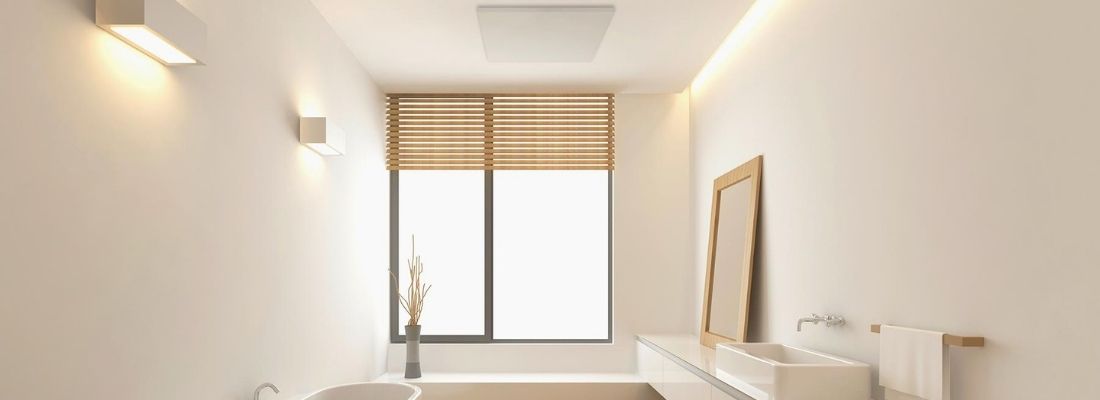How to switch from gas heating to electric?
As Russia uses its resources as leverage against European countries, gas prices continue to rise. 60% increase in a few months, the heating item explodes despite the freezing of the price charged to households. If you plan to change all your radiators, discover the advantages of electric heating.

5 good reasons to switch from gas to electric heating
Risk of limited shortage with electricity
Since a large majority of our electricity is produced by French nuclear power plants, this energy is much less exposed to current political factors. Conversely, our gas supply is directly affected by the conflict in Ukraine: Russia provides 40% of our supply in Europe (and 17% on our territory).
Consequently, when the former USSR cuts off the tap, prices skyrocket and the fear of a restriction sets in. France is getting organized so as not to run out of gas next winter, but for more peace of mind, an electrical installation seems to be a wise choice.
In addition, by installing photovoltaic panels, you can produce your own electricity. This reduces your dependence on the national grid.
Easy installation
Nothing is easier than installing electric radiators in your home: the installation is much easier than a boiler, a DIYer can do it yourself. The work is simple and quick to carry out, without any pipes.
Another advantage of electricity is that it is not necessary to provide energy storage. For gas, outside the municipalities distributing city gas, a tank is mandatory.
Optimal safety and reduced maintenance
With electric radiators, nothing could be simpler: no annual maintenance to be carried out. Whereas for a boiler and its water radiators, the passage of a professional is to be integrated into your annual cost (150 to 250 € approximately). This check is mandatory for your safety, your indoor air quality and to comply with your home insurance contract.
Over time, your boiler and its water circuit will lose efficiency: leakage, difficulty in reaching the heating temperature. It may be time to change the system.
To return to the electric versions, the recommendation is to carry out a general check twice a year at the electrical level as well as preventive cleaning to avoid having too much dust. A vacuum cleaner makes it easy to carry out the operation after having switched off the heating.
Electric radiator: an accessible initial investment
- Convector: from 50 to 200 €
- Radiant or infrared panel: from €200 to €1,000
- Storage heater: from 1000 to 2000 €
- Inertia radiator: from 400 to 1,500 €
Electric heating: ideal for the RE 2020
Turned upside down by the health crisis, the implementation of the 2020 environmental regulations gives pride of place to electricity. The objective is to improve the performance of our buildings, which represents 44% of our energy consumption. With this new regulation, the use of gas will become almost impossible. This ban is already in place for new individual housing, joining collective housing in 2024.
Electric heating: frequently used technologies
Often disparaged and associated with "toasters" which consume a lot while heating poorly, electric heating has evolved. It is reconsidered as a viable solution in well-insulated housing.
Electric convector
Simplest version of heatinge electric, which appeared in the 1970s: a heating resistor heats the air which will naturally rise and exit through the top of the radiator. The rise in temperature is rapid, but this operation by convection dries the air and distributes the temperature poorly in the room.
The thermal comfort is not ideal, despite everything, the convector is an economical solution which may be suitable for a little used room.
Radiant (or infrared) panel
Infrared heaters use a principle similar to the most well-known heat source: the sun.
Their operation is completely different from that of conventional radiators. Like the sun, they use radiation to heat the room instead of convection.
Common heating systems directly heat the air in the room (the convection phenomenon discussed above).

An infrared heating panel relies on radiation, which means it radiates heat directly to furniture, walls, floor or even occupants.
Infrared heating panels are therefore more efficient than most heating systems. They produce instant heat. With smart thermostats, the panels are very easy to regulate. Thanks to a high efficiency of nearly 100%, no conduction losses exist.
Infrared heaters provide healthy room air and prevent the formation of mold.
Storage heater
Based on a heating element such as cast iron or refractory brick, the storage heater nevertheless operates on electricity. As its name suggests, it accumulates calories and then releases them gradually.
The main advantage is to be able to supply it during off-peak hours and then release the heat stored during the day. These relatively heavy devices cannot be installed just anywhere: it is important to check whether your floor will withstand a load that potentially ranges from 130 kg to 450 kg.
Inertia radiator
Latest generation of electric heaters, inertia heaters combine the advantage of storage heaters while being much lighter. They diffuse gentle heat smoothly while offering excellent value for money. Coupled with a thermostat, controlling the temperature is easy, to optimize your comfort and your electricity consumption. At night, your rooms continue to be heated for several hours.
There are two types of inertial radiator:
- dry inertia
- fluid inertia
to summarize
- Simple to install, efficient for the latest generations, electric heating is finding its place in modern, well-insulated homes.
- Gas heating will gradually disappear from our homes
- Infrared or inertia heaters are the best choice for this heating method.
Our team is at your disposal to study how to replace your gas boiler system. During a renovation, it's time to optimize the energy performance of your home.
With the evolution of the price of kwh, your work will quickly pay for itself, especially if you are working on heating + insulation + replacement of your joinery + possibly a heat pump.






